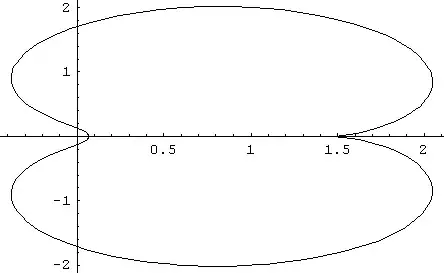Extensions of tetration
- Counter-intuitively it appears that extending tetration to the complex numbers is easier than extending tetration to the real numbers. Likely because the complex numbers have more degrees of freedom.
- Special functions for extending tetration - Faà Di Bruno's formula and the Bell polynomials are invaluable in extending tetration. They provide exact solutions to tetration of whole numbers. Most extensions of tetration to the real and complex numbers are only approximations.
- As a member of the Ackermann function, tetration denotes a unique growth rate.
- The difficulty with finding special functions for constructing tetration lies with the powers being so successful in constructing functions. But the umbral calculus emphasizes other fundamental processes besides the powers, like composition.
Consider iterated functions as iterated composition.
Faà Di Bruno's formula is
$$D^mf(g(z)) = \sum_{\pi(m)} \frac{m!}{k_1! \cdots k_m!}
(D^kf)(g(z))
\left(\frac{Dg(z)}{1!}\right)^{k_1} \cdots
\left(\frac{D^ng(z)}{m!}\right)^{k_m}$$
where $\pi(m)$ denotes a partition of $m$, usually denoted by $1^{k_1}2^{k_2}\cdots n^{k_m}$, with $k_1+2k_2+ \cdots mk_m=k$; where $k_i$ is the number of parts of size $i$. The partition function $p(m)$ is a decategorized version of $\pi(m)$, the function $\pi(m)$ enumerates the integer partitions of $m$, while $p(m)$ is the cardinality of the enumeration of $\pi(m)$.
Mathematica code for Faà Di Bruno's formula
$$\small D[f[g[z]], \{z, m\}] = \
\underset{K[1]=0}{\overset{n}{\sum }}f^{(K[1])}[g[z]]\ \text{BellY}\left[m,K[1],\text{Table}\left[g^{(K[2])}[z],\{K[2],1,-K[1]+m+1\}\right]\right]$$
$$D^m \ a\uparrow \uparrow z = D^m \ a^{(a\uparrow \uparrow {(z-1)})} = \sum_{\pi(m)} \frac{m!}{k_1! \cdots k_m!}
(D^k \ {a^z})(a^{(z-1)})
\left(\frac{D \ ^{z-1}a}{1!}\right)^{k_1} \cdots
\left(\frac{D^n \ ^{z-1}a}{m!}\right)^{k_m}$$
$$a\uparrow \uparrow b=\sum_{m=1}^{\infty} \frac{1}{m!} \ D^m \ (a\uparrow \uparrow b) \ (b-a\uparrow \uparrow \infty)^m$$
Fixed Points and Infinite Solutions
When the Lyapunov multipliers are a root of unity, a special solution is called for. Since there are infinite roots of unity, there are infinite solutions.
$f(0)=f_0=0$ - Fixed Point
$q \in \mathbb{Q}$, $n \in \mathbb{N^+}$, $\lambda \in \mathbb{S1}$
$\lambda = e^{2 q \pi i}$ - root of unity (symmetry)
$f'(0)=1$ - Abel's Functional Equation produces series of polynomials
$$f^t(z)=z+\frac{1}{2}t f_2 (z-f_0)^2 +\frac{1}{12}(3(t^2-t)f_2^2+2tf_3)(z-f_0)^3+\ldots$$
$f'(0)\ne \lambda^n$ - Schröder's Functional Equation produces series of exponentials
\begin{eqnarray}
f^t(z)=f_0 &+& \lambda ^t (z-f_0)+\frac{\lambda ^{-1+t} \left(-1+\lambda ^t\right) f_2}{2 (-1+\lambda )} (z-f_0)^2 \\
& + & \frac{1}{6} \left(\frac{3 \lambda ^{-2+t} \left(-1+\lambda ^t\right) \left(-\lambda +\lambda ^t\right) f_2^2}{(-1+\lambda )^2 (1+\lambda )}+\frac{\lambda ^{-1+t} \left(-1+\lambda ^{2 t}\right) f_3}{-1+\lambda ^2}\right) (z-f_0)^3+\ldots
\end{eqnarray}
$f'(0)= \lambda^n$ - Neutral Fixed Points
Neutral Fixed Points in Tetration
$e^{e^{2 \pi i x-{e^{2 \pi i x}}}}$

Tetration Mandelbrot Fractal

\begin{eqnarray}
{}^t a = a_o & + & \lambda ^t\left(1-a_o\right)+\frac{\lambda ^{-1+t} \left(-1+\lambda ^t\right) \text{Log}\left(a_o\right){}^2}{2 (-1+\lambda )}\left(1-a_o\right){}^2 \\
& + &\frac{1}{6}\text{ }\left(\frac{3 \lambda ^{-2+t} \left(-1+\lambda ^t\right) \left(-\lambda +\lambda ^t\right)\text{ }\text{Log}\left(a_o\right){}^4}{(-1+\lambda )^2 (1+\lambda )}\\
+\frac{\lambda ^{-1+t} \left(-1+\lambda ^t\right) \left(1+\lambda ^t\right)\text{ }\text{Log}\left(a_o\right){}^3}{(-1+\lambda ) (1+\lambda )}\right)\left(1-a_o\right){}^3+\ldots
\end{eqnarray}
Convergence
The convergence of each type of fixed point needs to be considered in order to prove tetration as a whole always converges.
Convergence can be proven by functional equation.
Points described by the Schröder's Functional Equation are dense in the complex plane. It's fractal spirals are exponential spirals, excluding negative powers like $z^{-1}$. But repeated exponentiation is convergent.
On the other hand are the roots of unity which manifest as the symmetry of the exponential function. For each root there are an infinite number of "larger" associated numbers from the Schröder's Functional Equation that are convergent.

